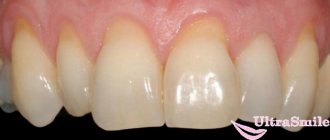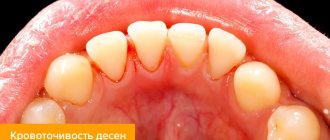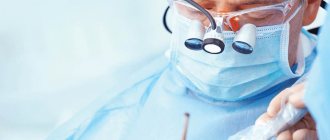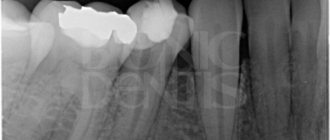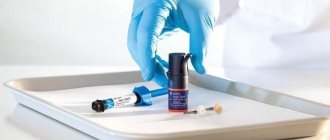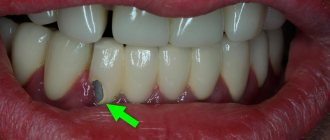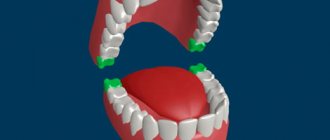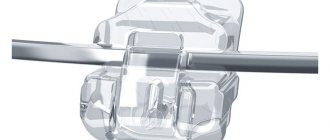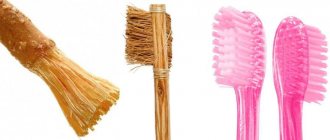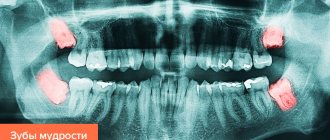Each set of teeth is unique
Each person's dentition is unique, just like their fingerprints.
Even if the differences in the distance between teeth in different people are fractions of a millimeter, each tooth has its own size, individual location, shape and a certain distance from neighboring teeth, which makes the dentition as a whole unique. Even two twins do not necessarily have the same dentition, because the formation of teeth is influenced not only by genes, but also by what happened in the first year of the baby’s life. For example, if one of the twins had the habit of thumb sucking, then his dentition will be different from the dentition of his brother or sister. Forensic dentistry is the science that identifies a victim or a criminal by their unique dentition. Specialists use databases with dental prints or x-rays.
Did you know that each person's tongue print is also unique?
About color
- In Europe, just two centuries ago, people were happy to give up their snow-white smiles in favor of yellow teeth. For what? Then it was simply fashionable to have a snow-white complexion. Therefore, women and men from high society used yellow dye to shade and highlight their noble complexion. And make your teeth yellower than they really are.
- One courtesan, who wished to remain anonymous, gave wise advice to Dumas the son. Well, like a wise man: it was necessary to lie more, “because this miraculously whitens your teeth.” This interesting fact, of course, has no confirmation.
- Things were even more interesting for the Mayan tribe. Its representatives painted their smiles in colors close to turquoise and jade, additionally using expensive stones. Women pirates were highly rated if their smile consisted of diamond teeth.
Teeth need saliva
Although saliva cannot replace brushing and flossing, it does serve a protective function.
Saliva helps protect teeth from plaque and also washes away food particles remaining on the surface of the teeth. Bacteria in plaque can lead to tooth decay as well as gum disease. A healthy person's body produces between 0.75 and 1.5 liters of saliva per day, which is about 35,000 liters over a lifetime - enough to fill two swimming pools! But xerostomia (insufficient salivation), a condition that is more common in older people, makes teeth more vulnerable and prone to decay.
We cleaned, we clean and we will clean
- A toothbrush cleans approximately 60% of the surface of the teeth. For everything else, there is dental floss and an irrigator (a home device for removing plaque, food debris between teeth and massaging the gums).
- Before the invention of toothpaste, the Romans cleaned their teeth with a mixture of eggshells, bones, hooves and ashes.
- Cheese provides a protective layer that neutralizes the acid in plaque. Maybe try brushing your teeth with cheese?
- Over the course of our lives, we brush our teeth an average of 38 days. Is it a lot or a little? If you count in days, it’s a lot, but if you count the money spent on dental treatment, it’s so little!
You don't have to brush all your teeth; limit yourself to the ones you want to keep.
Not everyone likes straight teeth
Orthodontics is a branch of dentistry that deals with the correction of uneven teeth and malocclusion.
Wearing braces is especially popular in North America (and many other countries), where people associate a beautiful smile with straight, white teeth. To correct uneven teeth, your dentist may recommend installing veneers on your teeth. Each treatment method has its own pros and cons, which you can learn more about from your doctor. Prices for installing veneers in Moscow vary depending on the material (ceramic or composite veneers), dental clinic, and skill level of the specialist. But straight teeth are not the ideal of beauty in all cultures. For example, in Japan, some people prefer to wear special veneers that make their teeth crooked - many young girls install them on their straight teeth.
TOP 25: Amazing facts about teeth that are true
Our teeth stay with us for life... depending on how good your hygiene is. However, we often don't pay much attention to them unless we're cleaning them or there's something wrong with them. Today we'll look at some lesser-known facts about teeth. Here are 25 weird facts about teeth that are true. 25. The side of your dominant hand is also your dominant chewing side.
Photo: flickr.com
As a rule, if you are right-handed, you will tend to chew food on the right side. If you are left-handed, your dominant chewing side will most likely be your left.
24. Teeth are stronger than bones
Photo: flickr.com
Some people believe that the strongest part of the human body is the bones, but in fact, the strongest and most durable part of the body is the dental enamel that covers the teeth.
23. Most of the tooth is hidden
Photo: flickr.com
Two thirds of the tooth are hidden in the gum. Only one third of the tooth is visible.
22. If you “just brush your teeth” you are missing 40% of your teeth.
Photo: flickr.com
Brushing only affects 60% of your teeth. The remaining 40% can be cleaned using dental floss. Yes, flossing is very important.
21. Roman toothpaste
Photo: flickr.com
Before the invention of toothpaste, the Romans made a paste from crushed eggshells, bones, ox hooves and ashes. Sounds pretty safe.
20. Teeth begin to form in the womb.
Photo: flickr.com
Even if they appear much later, your teeth are already in your mouth from the moment you are born. They are waiting in the wings to appear.
19. Teeth are like fingerprints
Photo: flickr.com
No two teeth are alike. Every person's teeth are unique, just like their fingerprints. In fact, teeth can be used to identify a person, just like fingerprints. This is one reason why dental records are used to identify human remains.
18. Cheese protects teeth
Photo: flickr.com
The cheese forms a protective layer that neutralizes the acid in plaque. Maybe throw away the toothpaste and put some cheese on your brush?
17. Twigs instead of a toothbrush
Photo: flickr.com
That's right, before the advent of the miracles of modern hygiene, people brushed their teeth with twigs. We can only hope that the branches were clean.
16. Roman mouthwash
Photo: flickr.com
Let's move back to Rome. During the Roman Empire, people used sterile urine to rinse their mouths. Ah, Rome. So clean.
15. Greens prevent teeth staining
Photo: flickr.com
Eating lettuce or steamed vegetables before a full meal can prevent stains on your teeth. Or maybe that's what parents say to get their kids to eat these vegetables.
14. Medieval remedy for toothache
Photo: flickr.com
In the Middle Ages, people kissed donkeys to relieve toothache. “Experts” believed that this was a surefire way to stop toothache.
13. Before the Tooth Fairy Appears
Photo: flickr.com
Before the Tooth Fairy started giving kids money for their teeth, children in England and Australia would put their baby teeth in a mouse hole in the hope that it would prevent toothache.
12. Attack with teeth
Photo: flickr.com
In Louisiana, biting someone with natural teeth would be considered assault. However, if you bite a person with false teeth, it will be considered aggravated assault.
11. George Washington's teeth weren't made of wood.
Photo: flickr.com
Although there is a popular myth that the US President had wooden teeth, there is not an iota of truth in this. In reality, Washington's teeth were made of gold, ivory, lead, and a mixture of human, donkey, and hippopotamus teeth.
10. The Romans put caps on their teeth
Photo: flickr.com
We've already mentioned the Romans a few times in this list, but let's take a look at good Roman dental practices. The Romans had impressive dental technology for their time. They covered damaged teeth with gold crowns.
9. Plaque contains 300 types of bacteria
Photo: flickr.com
This is true. Dental plaque contains an average of 300 types of bacteria. So, you know, brush your teeth.
8. Carbonated drinks accelerate tooth decay
Photo: flickr.com
Drinking three or more glasses of soda per day increases your likelihood of developing tooth decay and tooth loss by 62%. Drink water instead of soda.
7. 78% of young people have tooth decay
Photo: flickr.com
By age 17, 78% of Americans have at least one damaged tooth. Brush your teeth, people!
6. Giraffes don't have upper front teeth.
Photo: flickr.com
Like us, giraffes have 32 teeth. But unlike us, they have teeth in front only in the lower part of the jaw.
5. Over the course of our entire lives, we spend 38.5 days brushing our teeth.
Photo: flickr.com
Over the course of our lives, we spend an average of 38.5 days brushing our teeth. It seems like a lot.
4. The average person brushes their teeth for 45 seconds a day
Photo: flickr.com
On average, we brush our teeth for only 45-70 seconds a day. However, it is recommended to brush your teeth for two to three minutes a day.
3. Dentists in the 1800s
Photo: flickr.com
Back in the 1800s, barbers and blacksmiths served as dentists. Because barbers pulled out teeth, they were called "barber-surgeons."
2. Protection from vomit
Photo: flickr.com
Before we vomit, our mouth produces excessive amounts of saliva to protect our teeth from the acid in our vomit. But you should still brush your teeth afterwards.
1. Saving a knocked out tooth
Photo: flickr.com
If one of your teeth is knocked out, you can save the tooth by pushing it back into your gum within five minutes of it falling out.
Some teeth are very expensive
In 2011, at an auction in the UK, a Canadian dentist bought one of John Lennon's teeth for £19,500 ($30,500).
The buyer hoped to use DNA extracted from the tooth to clone Mr Lennon in the future. In 1816, a tooth said to have belonged to Sir Isaac Newton was also sold in London for £730 ($1,140), equivalent to $35,700 today. It was the most expensive human tooth sold in history.
Unfortunately, these days, the tooth fairy only nets kids an average of $3 per lost baby tooth.
What to do when your teeth hurt
- In the Middle Ages, people kissed donkeys to relieve toothache. History has preserved many written references to such a “procedure.”
- Before the Tooth Fairy began giving children money in exchange for lost teeth, children in England and Australia were encouraged to throw their baby teeth into mouse holes so that the new molars would grow white and healthy.
- The secret of Russian folk medicine is to put a plantain root in the ear, on the side where the tooth hurts, and everything will go away.
- More than 400 years ago, one of the popular, but, alas, ineffective methods of treating toothache was the Cardanus method. A German scientist suggested that the patient sit with his mouth open, exposing his teeth to the moonlight. Before this, the most painless method was to apply sparrow droppings mixed with oil into the ear on the side of the diseased tooth. This is how the scientist Pliny treated in the 1st century AD.
“If God wanted us to eat sugar, he would not have created dentists.” Ralph Nader, American lawyer
Tooth enamel cannot repair itself
Unlike other organs of the human body, which can repair themselves if they are damaged to a certain extent, teeth do not have this ability. If a piece of a tooth breaks off, only a dentist can help in such a situation. If a tooth is cracked, you may need a filling or dental crown. If the root of the tooth is also affected, root canal treatment will be necessary. The outer layer of teeth, tooth enamel, is not living tissue. For this reason, it cannot recover on its own.
Floss correctly
Look
Source:
Wrap the floss around the tooth in a "C" shape and gently begin to move it up and down. Don't be overzealous, or you'll accidentally cut your gums.
Some people are congenitally missing teeth
Hypodontia (or dental agenesis) is the absence of one or more teeth that were never formed.
The most common case is wisdom teeth, which are missing in 9-35% of people, due to racial factors. With hypodontia, lateral incisors or second premolars may also be missing. Adentia is a very rare disease in which a person is missing all (or several) teeth. The opposite situation is hyperdentia, when extra teeth grow in the mouth, “in addition” to the normal number of teeth.
Today, the problem of missing one or more teeth can be solved using modern prosthetic methods. The dentist will select the optimal method in each specific case, since there are contraindications that need to be taken into account. Dental implantation in Moscow is one of the most popular procedures on the dental services market.
Eating too often harms your teeth
Look
Source:
The more often food comes into contact with your teeth, the more opportunities it has to spread bacteria.
There is a tooth bank in Norway
MoBaTann, or dental biobank, is located in Norway.
Norwegian scientists plan to collect up to 100,000 children's baby teeth. All of these teeth will be the subject of research examining the relationship between environmental pollution and various diseases. It turns out that primary teeth can provide valuable information about the environment and nutrition during fetal development and early childhood. The condition of children's baby teeth is analyzed along with blood and urine samples from their parents. All this information will help provide an understanding of how environmental pollutants affect the health of mothers and children.
Tooth decay is the most common disease in children
Look
Source:
It would seem that there is nothing to worry about, because baby teeth will fall out anyway - but habits form quickly and remain with us for a very long time.
The most dangerous sport for dental health is hockey.
Contrary to popular belief that the most traumatic sport for the dental system is boxing, statistics claim that 68% of hockey players are injured.
That is, hockey is the most “tooth-dangerous” sport. In boxing, blows in most cases are “softened” by gloves, mouthguards also help to avoid unnecessary injuries, but in hockey - in the event of a blow under the helmet with a puck or stick - there is practically no chance of keeping the dentition intact. Many athletes have to resort to the services of aesthetic dentistry in order to restore not only the aesthetics, but also the functionality of the dentition through the installation of implants or a bridge.
Plaque hardens and turns into tartar.
Look
Source:
And it becomes much more difficult to remove. You can clean the plaque yourself, but with the stone you will have to go to the dentist.
In China about
In addition, in China there is a special holiday - “Love Your Teeth Day”, which takes place on September 20th. This day was first celebrated in 1989. In this way, the state decided to attract people's attention to issues of dental health and proper oral care.
The Russian-American clinic “US Dental Care” in Moscow specializes in a wide range of dental services - from ultrasonic cleaning, teeth whitening, aesthetic dentistry to complex surgical operations, implantation and dental prosthetics. For young patients, there is a pediatric dentistry department, where children are provided with a special approach taking into account age-related psychology. American dentistry is conveniently located in the center of the capital on Olimpiysky Prospekt (metro Prospekt Mira, Dostoevskaya). The elite dental clinic is equipped with the latest modern equipment, and a team of highly qualified dentists regularly undergo internships in America and improve their professional level.
The article was written using primary source materials https://www.studiodentaire.com/articles/en/10-things-you-didnt-know-about-teeth.php
The tasks of therapeutic dentistry include:
— diagnostics and treatment of caries by a dentist, as well as measures to prevent it;
— restoration of affected areas of teeth using modern filling materials with unique properties;
- treatment of caries complications (periodontitis, pulpitis, osteomyelitis, periostitis, gingivitis and others);
- treatment of dental diseases that do not arise due to the formation of caries (hypoplasia, hyperesthesia, necrosis of hard dental tissues, fluorosis, increased tooth abrasion, wedge-shaped defect and chronic acute dental injuries);
- treatment of problems arising in the oral mucosa (cheilitis, aphthous, catarrhal and ulcerative stomatitis, glossitis).
What is modern orthodontics like?
The use of new equipment in orthodontics has significantly improved the quality of treatment. Modern computer technologies make it possible to carry out the most accurate diagnostics, create virtual 3D models of the jaw and manufacture individual orthodontic appliances that will most accurately match the patient’s dental system and the characteristics of malocclusions. In addition, this approach allows you to cooperate with manufacturing companies in any country in the world, sending all patient data in electronic format. Modern orthodontic methods are aimed at simultaneous correction of the entire dentition and individual units to speed up the treatment process. Today, for patients with malocclusion, not only the result of treatment is important, but also the opportunity to continue leading their usual lifestyle with maximum comfort. New orthodontic appliances meet all aesthetic requirements. They have an attractive appearance or are completely invisible on the teeth.

